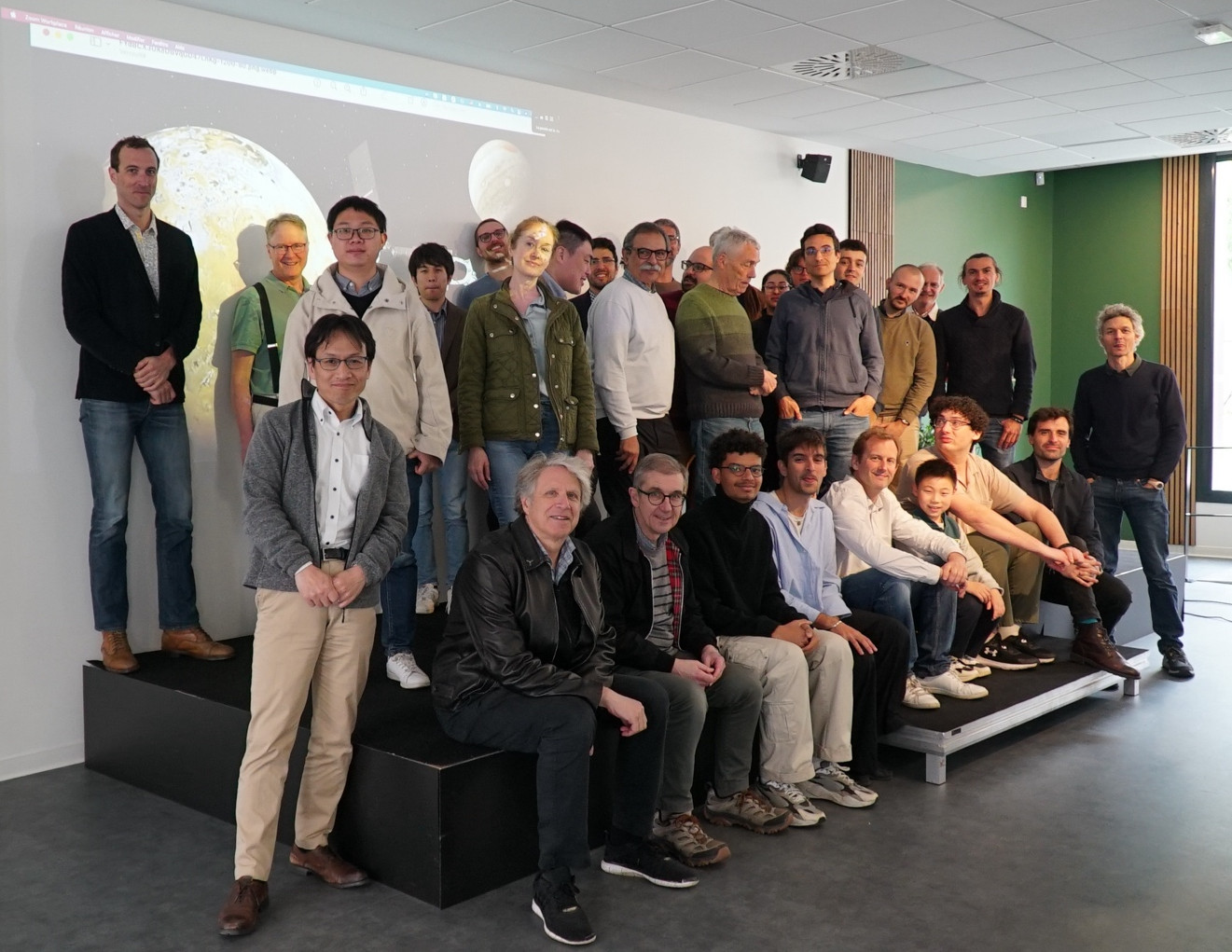THE SULPHUROUS IO, OBJECT OF ALL ATTENTIONS!
The study of the Jupiter system and the evolution of its moons toward habitability is at the heart of NASA’s extended Juno mission through 2025, and of the preparation of ESA’s Juice mission, currently en route to Jupiter for arrival in 2031. The Galilean moon Io, the most active volcanic object in the solar system, is the source of gas and plasma tori in the Jupiter system that play a central role in its dynamics: sustained by its very intense tidal interaction with Jupiter and the other Galilean moons, Io’s volcanic activity is the main source of plasma (it ejects approximately 1 ton of ionized gas composed of sulfur, oxygen, and sodium atoms every second) from the Jovian magnetosphere.
The plasma torus that this activity produces along Io’s orbit constantly feeds a disk of magnetized plasma rotating around Jupiter, whose dynamics largely control that of the magnetosphere. But the variability of this coupled system of volcanoes/atmosphere/torus of neutral gas and plasma/magnetized disk at different time scales, from Io’s revolution period of 1.75 days to monthly and annual variations, is still poorly understood. An international team of French, European, Moroccan, American, Japanese and Chinese researchers met in Toulouse on May 5 and 6 to review the state of our knowledge of Io and its environment, drawing in particular on recent observations by the Juno probe during its two close flybys of the moon and its repeated crossings of the gas and plasma tori surrounding it.

Participants at the Io & Torus Science, Observation and Modeling meeting held in Toulouse on May 5-6, 2025.
While this environment is difficult to explore in situ due to the intense radiation belts found there, Io’s gas and plasma tori are very easily observable from Earth using a small telescope equipped with a coronagraph capable of attenuating the light coming from Jupiter, thus enabling imaging of the ionized sodium and sulfur atoms rotating around the planet. The researchers meeting in Toulouse therefore propose setting up a longitude network, particularly at the Pic du Midi possibly in the framework of the interdisciplinary programme TIRIS, of small telescopes that will be able to continuously monitor the activity of Io’s tori as well as the volcanism of this moon, and study the relationships between the temporal variations of these two key components of the dynamics of the Jupiter system.
Set up in the coming years, this network will enable continuous observations of this System until the end of the 2030s, the “Golden Age” of Jupiter exploration, which will see successively the Juice (ESA) and Europa Clipper (NASA) missions, then the TianWen-4 mission of the Chinese space agency CNSA, in preparation, orbit Jupiter and closely observe Jupiter, its moons, their activity, the gas and plasma tori of Io, and the Jovian magnetosphere.
IRAP Contacts
- Nicolas ANDRE (IRAP et ISAE-SUPAERO), nicolas.andre@irap.omp.eu et nicolas.andre@isae-supaero.fr
- Michel BLANC (chercheur émérite à l’IRAP), michel.blanc@irap.omp.eu






